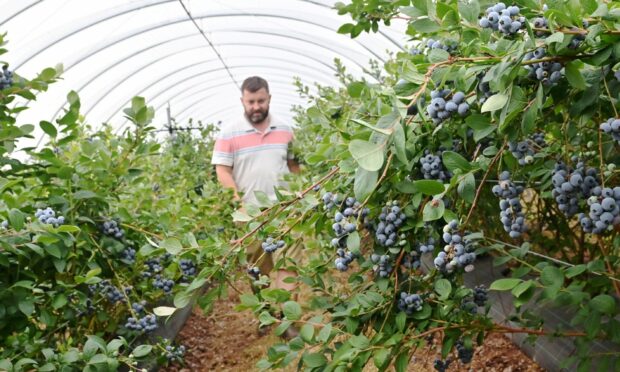Market differentiation and getting consumers to recognise the exceptional taste and quality of Scottish-grown blueberries will be key to re-booting what had until recently been an up-and-coming sector of the country’s soft fruit industry.
While recent years have seen a major exit of growers from this once-expanding crop – due principally to the shortage of labour available to harvest the fruit – a leading researcher and plant breeder this week said that there was still a bright future for blueberries in Scotland.
Dr Susan McCallum of the James Hutton Institute said that although blueberries were now the nation’s second most popular soft fruit after strawberries – accounting for an estimated £416 million of a total soft fruit spend of £1.6 billion – more than 70% of the product on supermarket shelves was likely to have spent several weeks in transit on a ship as they were imported from thousands of miles away.
“Consumer surveys have shown that the majority of those who buy these blueberries often do it more for the perceived health benefits of what has been termed a super-food rather than for the eating experience,” said Ms McCallum.
She said that while major producing countries such as Peru had the benefit of being able to supply the crop 52 weeks of the year – and often getting two harvests from the same bushes each year – the Scottish growing season, while considerably shorter, offered major benefits in terms of both fruit size and flavour:
“Those are some of the key areas on which our research is being focused – taste and eating quality.”
Dr McCallum said that getting consumers to recognise the quality which Scottish berries offered would allow domestic growers to take advantage of the top end of the market as it developed.
Other research work was aimed at breeding more resilient varieties which could be grown outside and which required fewer inputs in terms of fertiliser and sprays.
“While many of the crops have been grown in pots in polytunnels in the past, by growing crops outside we can help to reduce inputs by encouraging better utilisation of the mycorrhizal root associations with the soil biome – while also making the crop more conducive to mechanical harvesting.”
Raspberry breeder, Dr Nikki Jennings said that there had been a similar focus on reducing the costs for growers in the breeding of this crop – with one area of focus being ease of harvest, with the new variety Skye exhibiting particularly good picking efficiency.
However Dr Jennings said that the well established programme on this area had been supported by the multi-organisation Raspberry Breeding Consortium – but with the AHDB which had been a major contributor to the budget now no longer operating in the horticulture sector, future funding was likely to rely more heavily on international sources coming from Europe and beyond.
And with more than 9,000 blackcurrant plants currently being trialled at Dundee, Dr Amanda Moura said that with genetic markers now helping to screen varieties for resistance to the pest gall mite – which could spread the devastating Blackcurrant Reversion disease – it was hoped that this benefit could be bred into the processing varieties which accounted for around 90% of the UK market through products such as Ribena.

